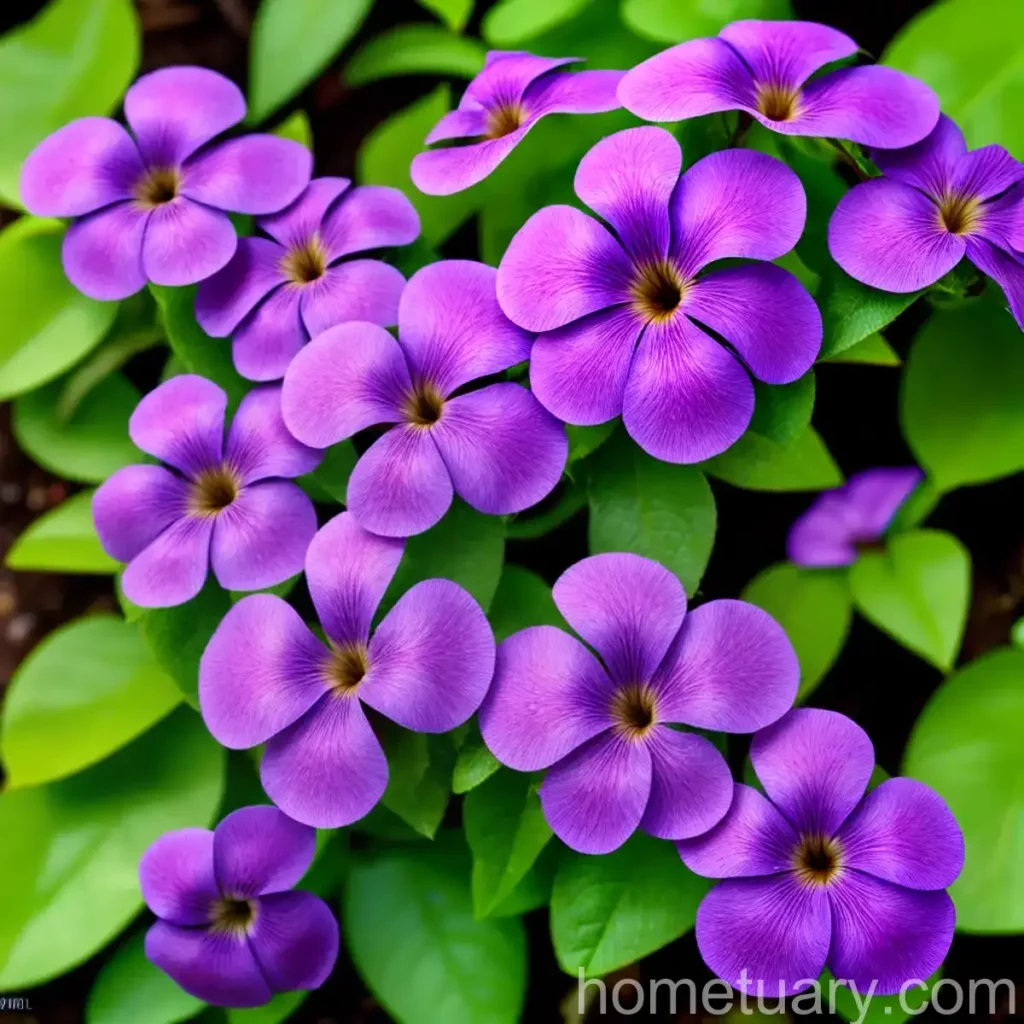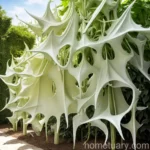Bush Violet (Browallia speciosa): A Complete Guide
Plants are a fundamental part of our environment, offering beauty, clean air, and even food. Among the diverse array of plants, the bush violet (Browallia speciosa) stands out for its attractive flowers and low-maintenance nature. In this comprehensive guide, we will explore the various aspects of this plant, including its culture, uses, maintenance, and more.
What is Bush Violet (Browallia speciosa)?
Bush violet, scientifically known as Browallia speciosa, is a species of flowering plant in the nightshade family, Solanaceae. Native to Central and South America, specifically to countries like Brazil and Venezuela, this plant is admired for its delicate, bell-shaped flowers and vibrant foliage.
Key Takeaways
Before delving into the specifics of caring for the bush violet, let’s outline the key takeaways regarding this plant.
- Plant Name: Bush Violet (Browallia speciosa)
- Sunlight: Requires partial to full sunlight
- Water: Moderate watering, ensuring well-draining soil
- Soil: Well-draining, nutrient-rich soil
- Fertilizer: Balanced liquid fertilizer every 2-4 weeks during the growing season
- Pruning: Regular deadheading to promote continuous blooming
- Propagation: Easily propagated from seeds or stem cuttings
- Diseases: Susceptible to fungal diseases, particularly in humid conditions
- Pests: Occasionally affected by aphids and whiteflies
Now, let’s explore each of these aspects in detail to understand how to care for and cultivate the bush violet successfully.
Culture
Uses
- Ornamental Plant: Bush violets are primarily cultivated for their ornamental value. Their colorful flowers make them a popular choice for gardens, borders, and containers.
- Landscaping: Due to their compact growth habit, bush violets are often used in landscaping to add color and texture to flowerbeds and borders.
- Cut Flowers: The attractive blooms of the bush violet make it suitable for creating stunning cut flower arrangements.
Water
Proper watering is crucial for the health and vitality of bush violets. These plants prefer consistently moist but not waterlogged soil. Here are some watering tips for bush violet care:
- Frequency: Water the plant when the top inch of the soil feels dry. This typically translates to a frequency of 1-2 times per week, depending on the environmental conditions.
- Soil Moisture: Aim to keep the soil consistently moist but avoid overwatering, as it can lead to root rot.
- Watering Methods: Water the soil at the base of the plant to prevent water from collecting on the leaves, which can encourage fungal diseases.
Sunlight
Proper sunlight is essential for the healthy growth and blooming of bush violets. Here are the sunlight requirements for this plant:
- Light Conditions: Bush violets thrive in partial to full sunlight. They require at least 4-6 hours of direct sunlight daily to bloom profusely.
- Indoor Care: When grown indoors, place the plant near a south or west-facing window to ensure it receives an adequate amount of sunlight.
Fertilizer
Applying fertilizer can help promote robust growth and prolific blooming in bush violets. Consider the following guidelines for fertilizing these plants:
- Fertilizer Type: Use a balanced liquid fertilizer with equal N-P-K (nitrogen, phosphorus, and potassium) ratio.
- Feeding Frequency: Apply fertilizer every 2-4 weeks during the growing season (spring to fall) to provide essential nutrients for the plant’s development.
Soil
Choosing the right soil and ensuring proper soil conditions are essential for the optimal growth of bush violets. Consider the following soil preferences for these plants:
- Soil Type: Use well-draining, loamy soil for planting bush violets. The soil should be rich in organic matter to support healthy growth.
- Acidic Soil: Bush violets prefer slightly acidic soil with a pH range of 5.5 to 6.0. Amending the soil with organic matter can help achieve the ideal pH level.
Pruning
Pruning is an important aspect of bush violet care, helping to maintain the plant’s shape and promote continuous blooming. Here are some key pruning tips for bush violets:
- Deadheading: Regularly remove faded blossoms by pinching or snipping them off. Deadheading encourages the plant to produce new flowers, extending the blooming period.
- Trimming: Trim back overgrown or leggy stems to promote a more compact and bushy growth habit.
Propagation
Bush violets can be easily propagated from seeds or stem cuttings, offering a cost-effective way to expand your plant collection or share them with fellow gardening enthusiasts. Here’s how you can propagate bush violets:
- From Seeds: Collect mature seeds from the plant and sow them in a seed-starting mix. Keep the soil consistently moist and provide warm temperatures for successful germination.
- From Stem Cuttings: Take 3-4 inch stem cuttings from a healthy bush violet plant. Remove the lower leaves and dip the cut end in a rooting hormone. Plant the cuttings in a well-draining potting mix and keep them moist until they root.
Container Popularity
Bush violets are well-suited for container gardening, offering versatility and the ability to thrive in a confined space. Here are some reasons why they are popular container plants:
- Compact Growth: The relatively compact size of bush violets makes them ideal for growing in containers on patios, balconies, and decks.
- Aesthetic Appeal: The vibrant flowers and attractive foliage of bush violets make them a visually appealing addition to container gardens.
- Easy Maintenance: Container-grown bush violets are easier to manage and can be moved to optimal sunlight conditions as needed.
Common Diseases
While bush violets are generally low-maintenance plants, they are susceptible to certain diseases, particularly in humid conditions or when grown in poorly ventilated areas. The following are common diseases that can affect bush violets:
- Powdery Mildew: This fungal disease appears as a powdery white coating on the leaves and stems of the plant. It can inhibit plant growth and flowering if left untreated.
- Botrytis Blight: Also known as gray mold, this fungal disease causes brown spots on leaves and flowers, often leading to their premature wilting and decay.
- Root Rot: Overwatering or poorly draining soil can lead to root rot, causing the plant’s roots to become mushy and discolored.
Disease Diagnosis
Proper diagnosis of plant diseases is crucial for implementing effective treatment measures. Here’s how to diagnose common diseases in bush violets:
- Symptom Observation: Pay attention to any unusual discoloration, spots, or growth abnormalities on the leaves, stems, and flowers.
- Fungal Signs: Check for the presence of powdery white coatings, moldy growth, or unusual soft spots, which may indicate fungal diseases.
- Root Examination: If the plant shows signs of decline, carefully inspect the roots for any signs of rot or discoloration.
Common Pests
While generally resilient, bush violets can occasionally attract certain pests that can hinder their growth and flowering. Common pests that may affect these plants include:
- Aphids: These small, sap-sucking insects can congregate on the tender growth of bush violets, causing distortion and yellowing of the leaves.
- Whiteflies: Whiteflies are tiny, moth-like insects that often gather on the undersides of the leaves, sucking out the plant’s sap and causing leaf yellowing and wilting.
Botanist’s Tips
To help you cultivate healthy and vibrant bush violets, here are some expert tips from botanists and experienced gardeners:
- Adequate Air Circulation: Provide ample air circulation around the plants, especially in humid conditions, to reduce the risk of fungal diseases.
- Mulching: Apply a layer of organic mulch around the base of bush violets to help retain soil moisture and suppress weed growth.
- Regular Inspection: Routinely inspect the plants for signs of pests and diseases, addressing any issues promptly to prevent widespread infestations.
Fun Facts
Here are some intriguing and lesser-known facts about bush violets that add to the charm of these plants:
- Attracts Pollinators: The colorful blooms of bush violets attract pollinators like bees and butterflies, contributing to the overall biodiversity of the garden.
- Medicinal Properties: In traditional medicine, certain parts of the bush violet plant are believed to possess medicinal properties, with uses ranging from respiratory health to skin conditions.
- Ornamental Features: The delicate, bell-shaped flowers of bush violets are not only visually appealing but also provide a touch of elegance to any garden or floral arrangement.
Links to External Resources
For further information on cultivating and caring for bush violets, consider exploring the following external resources:
- The Royal Horticultural Society (RHS) – Browallia speciosa
- University of Florida IFAS Extension – Browallia speciosa
- Missouri Botanical Garden – Browallia speciosa
In conclusion, the bush violet (Browallia speciosa) is a delightful addition to any garden or landscape, offering vibrant blooms, low-maintenance care, and a myriad of uses. By understanding its cultural requirements, potential uses, and proactive maintenance practices, you can ensure the successful cultivation of this charming plant in your own green spaces. Whether grown in containers, flower beds, or used in floral arrangements, the bush violet is sure to captivate with its colorful display and ornamental appeal.
Remember that each plant is unique, so it’s important to observe and respond to the specific needs of your bush violets to help them thrive and flourish in their environment. Happy gardening!















